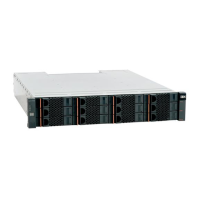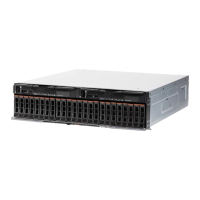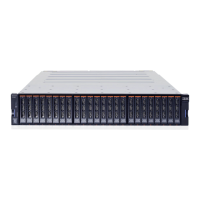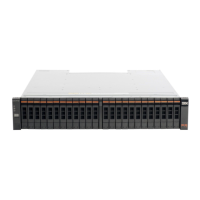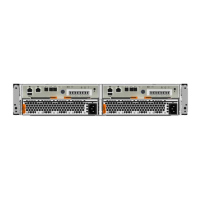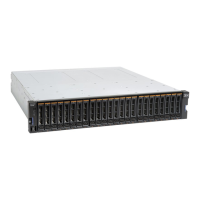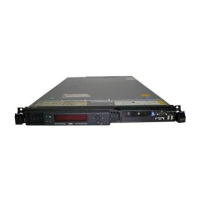608 IBM Flex System V7000 Storage Node Introduction and Implementation Guide
13.8.3 Removing and replacing parts for troubleshooting and resolving
problems
You can remove and replace customer replaceable units (CRUs) from the control enclosure or
the expansion enclosure.
Even though many of these procedures are hot-swappable, they are intended to be used only
when your system is not up and running and performing I/O operations. If your system is
powered on and performing I/O operations, go to the management GUI and follow the Fix
Procedures. Performing the replacement actions without the assistance of the Fix Procedures
can result in loss of data or loss of access to data.
Each replaceable unit has its own removal procedure. Sometimes you can find that a step
within a procedure might refer you to a different remove and replace procedure. Complete the
new procedure before you continue with the first procedure that you started.
13.8.4 Event reporting
Events that are detected are saved in an event log. As soon as an entry is made in this event
log, the condition is analyzed. If any service activity is required, a notification is sent.
The following methods are used to notify you and the IBM Support Center of a new event:
If you enabled Simple Network Management Protocol (SNMP), an SNMP trap is sent to an
SNMP manager that is configured by the customer.
If enabled, log messages can be forwarded from a sender to a receiver on an IP network
by using the Syslog protocol.
If enabled, event notifications can be forwarded from a sender to a receiver through Call
Home email.
If Call Home is enabled, critical faults generate a problem management record (PMR) that
is sent directly to the appropriate IBM Support Center.
In general, events are classified as either alerts or messages:
An alert is logged when the event requires some action. Some alerts have an associated
error code that defines the service action that is required. The service actions are
automated through the Fix Procedures. If the alert does not have an error code, the alert
represents an unexpected change in state. This situation must be investigated to see if it is
expected or represents a failure. Investigate an alert and resolve it as soon as it is
reported.
A message is logged when a change that is expected is reported, for instance, an IBM
FlashCopy operation completes.
Attention: If your system is powered on and performing I/O operations, go to the
management GUI and follow the Fix Procedures. Removing a node without the assistance
of the Fix Procedures can result in loss of data or access to data.
Tip: Remove or replace CRU parts only when you are directed to do so. The field
replaceable units (FRUs) must be installed only by trained service technicians.
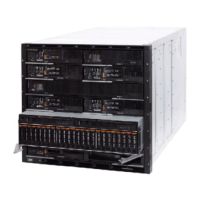
